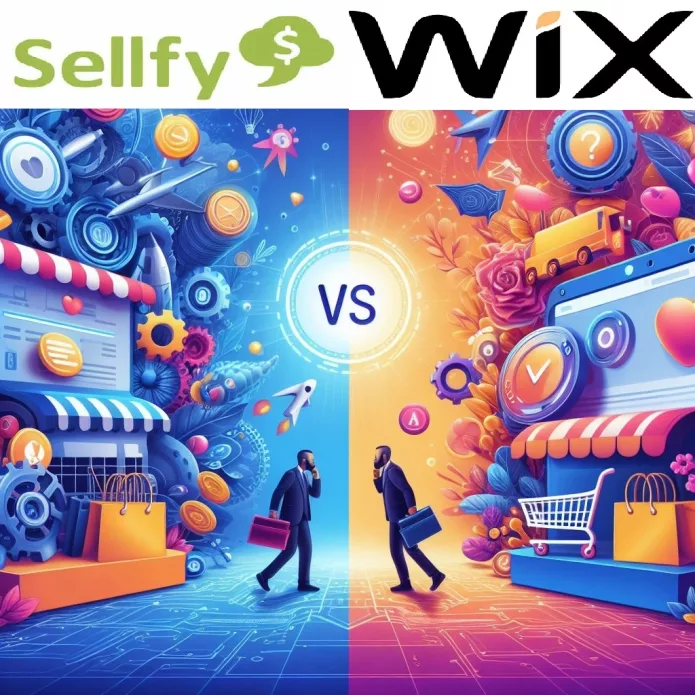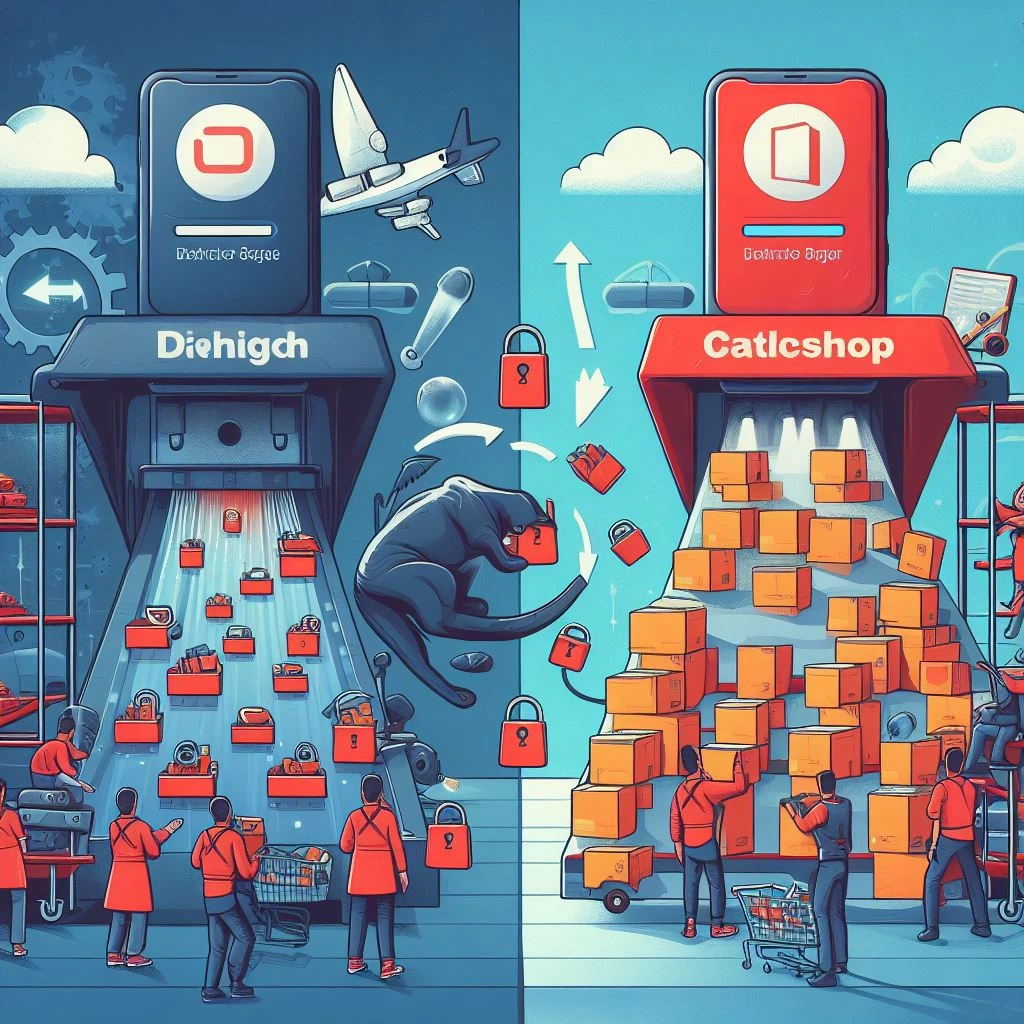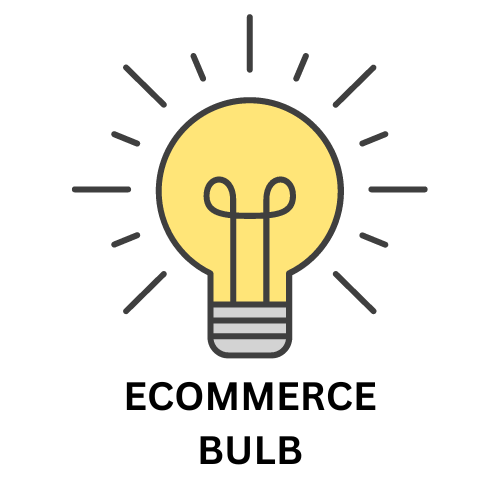
In order to decide which ecommerce platform to use, Sellfy vs WiX. A detailed comparison between features must be thoroughly done. If you want to decide which eCommerce platform to choose, there are many things to consider.
These are some examples of these factors:
- Cost.
- SEO friendliness.
- Page load speed.
- Canonical website URL.
- Indexing Control.
- Customizable HTML capabilities.
- Sitemap Generator.
- Integration with Google Analytics.
- Product Tagging and Categorization.
- Batch Uploading.
- Mobile Optimization.
- Built-in Blogging and Marketing Features.
- Social Sharing Buttons.
- Content Management Capabilities.
- Discount and promotion code tools.
- Easy to use Checkout.
- Reporting tools and custom reports.
- Integration of email marketing tools.
- Multiple payment options.
- Flexibility to add new eCommerce features.
- Exclusive features.
- Cons and pros.
Here we’ll discuss these factors to help you decide which platform is better for you, WiX or Sellfy. And at the end of the discussion, we’ll recap and make a comparison for the scores of all these points to find out which eCommerce platform has the higher score, so that you’ll have a good view about both of them.
Read Further: Top 6 Sellfy Reviews
Pricing (Sellfy vs WiX):

When comparing pricing for Sellfy and Wix, it’s crucial to consider your specific needs and priorities. Both platforms offer a range of plans with varying features and limitations. Here’s a breakdown to help you choose:
Sellfy:
- Freemium Model: Offers a free plan with limited features (10 products, 10 GB storage, 100 orders/month).
- Paid Plans: Three paid plans range from $19/month to $99/month, offering increased features like unlimited products, storage, bandwidth, advanced analytics, coupons, discounts, subscriptions, and more.
- Focus: Primarily caters to digital product creators, musicians, artists, photographers, and solopreneurs selling a limited number of products.
Wix:
- Freemium Model: Offers a free plan with limited features (500 MB storage, Wix branding on site, limited customization).
- Paid Plans: Five paid plans range from $4.50/month to $39/month, offering increased features like more storage, bandwidth, custom domain, ad removal, advanced eCommerce features, and marketing tools.
- Focus: More versatile platform catering to both online stores and regular websites for various businesses and needs.
Here’s a comparison table to highlight key differences:
| Feature | Sellfy | Wix |
|---|---|---|
| Free Plan | Limited features (10 products, 10 GB storage, 100 orders/month) | Limited features (500 MB storage, Wix branding, limited customization) |
| Paid Plans | $19/month – $99/month | $4.50/month – $39/month |
| Focus | Digital products | Various businesses and needs |
| Ecommerce Features | Basic features like product listings, checkout, coupons, discounts | More advanced features like abandoned cart recovery, product reviews, discounts, memberships, etc. |
| Marketing Tools | Limited tools | More extensive tools like email marketing, SEO, social media integration, etc. |
| Scalability | Suitable for smaller businesses with fewer products | More scalable for larger businesses with wider product ranges and higher traffic |

SEO Capabilities (Sellfy vs WiX):

When it comes to SEO (Search Engine Optimization) capabilities, Sellfy and Wix take different approaches, each with its advantages and disadvantages depending on your needs:
Sellfy:
Strengths:
- Simple and focused platform: Sellfy’s focus on digital products simplifies their SEO tools, making them easy to understand and implement for beginners.
- Automatic title tags and meta descriptions: Sellfy automatically generates SEO-friendly titles and meta descriptions for your products, taking care of basic on-page optimization.
- Mobile-friendly platform: All Sellfy stores are inherently mobile-friendly, which is vital for SEO in today’s mobile-first world.
- Clean and lightweight code: Sellfy’s platform is lightweight and avoids unnecessary bloat, ensuring faster loading times, a crucial factor for SEO.
Weaknesses:
- Limited control over SEO: You have less control over advanced SEO aspects like technical optimization, custom URLs, and schema markup compared to Wix.
- Fewer SEO tools: Sellfy offers a basic set of SEO tools compared to Wix’s more comprehensive offerings.
- Less customization: Limited control over your store’s design and structure can hinder in-depth SEO optimization.
Wix:
Strengths:
- More comprehensive SEO tools: Wix offers a wider range of SEO tools, including keyword research, sitemap generation, robots.txt editor, structured data markup, and more.
- Greater control over SEO: You have more control over technical optimization aspects like page speed, mobile responsiveness, and custom URLs.
- Wix SEO Wiz: This built-in tool guides you through basic SEO steps and provides personalized recommendations for improving your site’s visibility.
- App integrations: The Wix App Market offers various SEO-related apps to expand your optimization capabilities.
Weaknesses:
- Steeper learning curve: Using Wix’s advanced SEO tools effectively might require some technical knowledge or SEO experience.
- Potential for clutter: Wix’s drag-and-drop interface can lead to over-complication and bloated websites, negatively impacting SEO.
- Wix branding on free plan: The free plan displays Wix branding, which can deter serious SEO efforts.
PageLoad Speed (Sellfy vs WiX):

Page load speed is crucial for both user experience and SEO, so it’s important to consider when choosing between Sellfy and Wix. Here’s a breakdown of their strengths and weaknesses:
Sellfy:
Strengths:
- Lightweight platform: Sellfy’s clean code and focus on essential functionalities lead to faster loading times.
- Image optimization: Sellfy automatically optimizes images for web delivery, reducing file size without sacrificing quality.
- Mobile-friendly infrastructure: Sellfy’s platform is inherently mobile-optimized, which generally implies faster loading times on mobile devices.
Weaknesses:
- Limited customization: Less control over design and layout elements can limit opportunities for advanced speed optimization techniques.
- Fewer third-party integrations: Limited access to additional tools or plugins for further speed optimization compared to Wix.
- Potential for slower loading times with large product catalogs: While generally fast, loading times could increase with numerous products due to increased data and images.
Wix:
Strengths:
- Variety of speed optimization tools: Wix offers built-in tools for image compression, lazy loading, mobile optimization, and caching, allowing for manual fine-tuning.
- App integrations: The Wix App Market provides access to various third-party apps and plugins specifically designed for improving website speed.
- Greater control over design and layout: Wix’s flexible platform allows for advanced optimizations like code editing and custom scripts to boost speed further.
Weaknesses:
- Potential for bloat and slower loading times: Wix’s drag-and-drop interface can lead to over-complicated designs with excessive elements, impacting speed.
- Free plan limitations: The free plan includes Wix branding and limited resources, potentially affecting website performance.
- Steeper learning curve: Utilizing advanced speed optimization features on Wix might require some technical knowledge or expertise.

Canonical Website URL (Sellfy vs WiX):

When it comes to canonical website URLs, both Sellfy and Wix handle them differently, potentially impacting your SEO strategy. Here’s a breakdown:
Sellfy:
- Automatic canonicalization: Sellfy automatically sets the canonical URL for each product page to itself, preventing duplicate content issues.
- Limited control: You don’t have direct control over the canonical URL, making it difficult to customize URLs for SEO purposes.
- Subdomain structure: Free Sellfy stores use a subdomain structure (yourname.sellfy.store), which might not be ideal for branding depending on your goals.
Wix:
- Manual canonicalization: Wix allows you to set the canonical URL for each page individually, giving you more control for SEO optimization.
- Customization options: You can customize the URL structure for various pages, including product pages, to align with your branding and SEO strategy.
- Root domain option: Paid Wix plans allow using your own domain name, enhancing brand consistency and potentially improving SEO authority.
Here’s a comparison table to summarize the key differences:
| Feature | Sellfy | Wix |
|---|---|---|
| Canonicalization | Automatic | Manual |
| Control over URLs | Limited | Extensive |
| Domain structure | Subdomain (free plan) | Custom domain (paid plans) |

Indexing Control (Sellfy vs WiX):

Indexing control, which refers to your ability to tell search engines which pages of your website to include in their search results, differs between Sellfy and Wix, impacting your SEO strategy:
Sellfy:
- Limited indexing control: Sellfy doesn’t offer direct control over page indexing. While all product pages are typically indexed by default, you can’t individually block or submit specific pages for indexing.
- Automatic sitemap generation: Sellfy automatically generates a sitemap, which helps search engines discover your content, but you can’t customize it to specify individual page indexing preferences.
- Focus on product pages: Sellfy primarily focuses on indexing product pages for optimal product discoverability through search engines.
Wix:
- More control over indexing: Wix provides various options for controlling page indexing. You can individually set pages to “indexable” or “noindex” through the page settings.
- Robots.txt editor: Wix allows editing the robots.txt file, giving you advanced control over which pages and directories you want search engines to crawl and index.
- Sitemap customization: Wix provides tools to customize your sitemap, allowing you to include or exclude specific pages based on your indexing preferences.
Here’s a comparison table summarizing the key differences:
| Feature | Sellfy | Wix |
|---|---|---|
| Indexing control | Limited | More control (individual page options, robots.txt) |
| Sitemap customization | Automatic | Custom (include/exclude specific pages) |
| Focus | Product pages | All pages (flexible control) |
Does Sellfy Work with WiX?
Yes, Sellfy does work with Wix! There are two main ways to use Sellfy with Wix: 1. **Sell Downloads app:** This is a free app available on the Wix App Market that allows you to add a "Buy Now" button to your Wix website. When customers click the button, they will be taken to a checkout page hosted by Sellfy. This is a good option if you just want to sell a few digital products and don't need all the features of a full e-commerce platform. [Image of Sell Downloads app by Sellfy on Wix App Market] 2. **Embed your Sellfy store:** If you have a Sellfy store, you can embed it directly into your Wix website. This will give your customers a more seamless shopping experience, as they won't have to leave your Wix site to checkout. To do this, you'll need to use the Sellfy embed code. [Image of Sellfy embed code] Here are some of the benefits of using Sellfy with Wix: * **Easy to use:** Both the Sell Downloads app and the Sellfy embed code are easy to set up, even if you're not a techie. * **Sell a variety of products:** You can sell digital products, physical products, and subscriptions with Sellfy. * **Get paid in multiple currencies:** Sellfy accepts payments in over 200 currencies. * **Track your sales:** You can track your sales and view customer data in your Sellfy dashboard. Overall, Sellfy is a great option for Wix users who want to start selling products online. It's easy to use, affordable, and has a wide range of features. Here are some additional things to keep in mind: * The Sell Downloads app is a separate service from Sellfy.com. This means that you will need to create a separate Sell Downloads account if you want to use the app. * The Sell Downloads app is only available for Wix websites. If you have a website on another platform, you will need to use the Sellfy embed code. * If you have any questions about using Sellfy with Wix, you can contact Sellfy's support team.

Customizable HTML Capabilities (Sellfy vs WiX):

When it comes to customizing your online store with HTML, Sellfy and Wix offer different levels of flexibility and control, catering to diverse needs and skill sets. Here’s a breakdown to help you choose the platform that best suits your requirements:
Sellfy:
Limited HTML editing: Sellfy doesn’t offer direct access to edit the underlying HTML code. However, it provides pre-built templates and customizable design elements you can configure without coding knowledge. Focus on simplicity: Sellfy prioritizes ease of use and a streamlined experience. If you’re not comfortable with HTML or prefer drag-and-drop customization, Sellfy might be easier to manage. Limited design flexibility: While you can customize existing elements, the overall design freedom is restricted compared to platforms with full HTML access.
Wix:
Extensive HTML editing: Wix grants full access to the website’s HTML code, enabling advanced customization for experienced users. You can directly edit existing templates, create custom layouts, and implement complex HTML/CSS functionalities. Steeper learning curve: Using Wix’s full HTML potential requires coding knowledge and understanding of web development concepts. Beginners might find the interface overwhelming and prefer Sellfy’s simpler approach. Greater design freedom: Wix allows complete control over your website’s design, enabling unique brand presentations and tailored functionalities through custom HTML/CSS coding.
Here’s a table summarizing the key differences:
| Feature | Sellfy | Wix |
|---|---|---|
| HTML editing access | Limited (pre-built templates, no direct code editing) | Full access (edit HTML/CSS directly) |
| Learning curve | Easy, no coding required | Steeper, requires coding knowledge |
| Design flexibility | Limited within preset templates | Unlimited through custom HTML/CSS |

Sitemap Generators (Sellfy vs WiX):

When it comes to sitemaps, both Sellfy and Wix offer different functionalities and approaches to help search engines discover your website’s content, impacting your SEO efforts. Here’s a breakdown:
Sellfy:
- Automatic sitemap generation: Sellfy automatically generates a sitemap for your store, including all product pages and essential website pages.
- Limited customization: You cannot directly edit or customize the generated sitemap, preventing the inclusion or exclusion of specific pages.
- Focus on simplicity: Sellfy prioritizes ease of use and eliminates the need for manual sitemap configuration, suitable for beginners or those not needing advanced control.
Wix:
- Built-in sitemap generator: Wix provides a built-in tool to generate a sitemap, offering more control than Sellfy’s automatic option.
- Sitemap customization: You can edit the generated sitemap by including or excluding specific pages, prioritizing important content for search engines.
- Advanced options: Wix allows editing the robots.txt file, further refining page indexing and guiding search engine crawlers.
- Sitemap submission tools: Wix provides tools to directly submit your sitemap to major search engines like Google and Bing, accelerating content discovery.
Here’s a comparison table summarizing the key differences:
| Feature | Sellfy | Wix |
|---|---|---|
| Sitemap generation | Automatic | Built-in tool with customization |
| Sitemap customization | Limited (no direct editing) | Extensive (include/exclude pages) |
| Advanced options | None | Robots.txt editing, direct submission |

Integration With Google Analytics (Sellfy vs WiX):

Integrating your online store with Google Analytics provides valuable insights into visitor behavior, performance metrics, and helps optimize your sales strategy. Both Sellfy and Wix offer different approaches to Google Analytics integration, catering to diverse needs and technical skills. Here’s a breakdown:
Sellfy:
- Native Google Analytics integration: Sellfy offers built-in integration with Google Analytics, allowing you to connect your account directly with a few clicks.
- Limited setup options: Sellfy provides basic configuration options like enabling tracking and specifying your Google Analytics ID.
- Focus on simplicity: Sellfy’s integration caters to users who want a quick and easy way to connect their store to Google Analytics without extensive configuration.
Wix:
- Custom Google Analytics code installation: Wix requires manually adding your Google Analytics tracking code to your website, offering more control and flexibility.
- Advanced tracking options: You can configure custom event tracking, set goals, and access more detailed data compared to Sellfy’s pre-built integration.
- Steeper learning curve: Manual code implementation might require some technical knowledge or understanding of Google Analytics configuration.
Here’s a table summarizing the key differences:
| Feature | Sellfy | Wix |
|---|---|---|
| Integration type | Native (built-in) | Manual code installation |
| Setup options | Basic (enable tracking, Google Analytics ID) | Advanced (custom events, goals, detailed data) |
| Learning curve | Easy | Steeper (requires technical knowledge) |

Product Tagging and Categorization (Sellfy vs WiX):

Both Sellfy and Wix offer product tagging and categorization features, but they take different approaches, catering to different needs and levels of complexity. Here’s a breakdown to help you choose which platform suits your product organization and discoverability goals:
Sellfy:
- Simple tagging system: Sellfy allows tagging products with keywords for easier organization and filtering. Tags are primarily used for internal organization and don’t directly affect product page structure.
- Predefined categories: Sellfy provides a set of predefined categories you can assign to products, offering basic organization for browsing.
- Limited customization: You can’t create or modify predefined categories or customize the tagging structure extensively.
Wix:
- Flexible tagging system: Wix supports multiple tags per product, allowing for more granular organization and categorization. Tags can be displayed on product pages for improved discoverability.
- Customizable categories: You can create your own categories, subcategories, and even nest them for multi-layered product organization.
- Greater control: You have more control over how tags and categories are displayed and utilized on your website, influencing product discoverability and user experience.
Here’s a table summarizing the key differences:
| Feature | Sellfy | Wix |
|---|---|---|
| Tagging system | Simple, limited keywords | Flexible, multiple tags, displayable on product pages |
| Categories | Predefined, limited customization | Customizable, create/modify categories and subcategories |
| Control | Limited control over tag/category structure | Greater control over display and functionalities |

Batch Uploading (Sellfy vs WiX):

Both Sellfy and Wix offer batch uploading for adding multiple products at once, saving you time and effort when managing your online store. However, they take different approaches, catering to various needs and levels of product complexity. Here’s a breakdown to help you choose the platform that best suits your bulk product management style:
Sellfy:
- Simple drag-and-drop interface: Sellfy allows dragging and dropping CSV files containing product information directly onto the platform for bulk upload.
- Basic product information: Limited to adding essential details like product name, description, price, and image in the CSV file.
- Focus on simplicity: Sellfy prioritizes an easy-to-use approach for beginners, making bulk uploading fast and straightforward.
Wix:
- Detailed CSV template: Wix provides a downloadable CSV template with various fields for adding extensive product information like variants, categories, tags, inventory levels, etc.
- Greater control: You have more control over what product details to include in the bulk upload, enabling more complex product configurations.
- Steeper learning curve: Understanding the template structure and required fields might require some technical knowledge or familiarization.
Here’s a table summarizing the key differences:
| Feature | Sellfy | Wix |
|---|---|---|
| Upload method | Drag-and-drop CSV | Detailed CSV template download |
| Product information | Basic details (name, description, price, image) | Extensive details (variants, categories, tags, inventory, etc.) |
| Ease of use | Very easy | Requires some learning curve |
Mobile Optimization (Sellfy vs WiX):

Mobile optimization is crucial for online stores, as a significant portion of traffic comes from mobile devices. Both Sellfy and Wix offer mobile optimization features, but they cater to different needs and approaches. Here’s a breakdown to help you choose the platform that best suits your mobile store experience:
Sellfy:
- Mobile-responsive platform: Sellfy is inherently mobile-friendly, meaning your store automatically adapts to various screen sizes and offers a good user experience on mobile devices.
- Limited customization: You have limited control over the mobile layout and design compared to desktop versions.
- Focus on simplicity: Sellfy prioritizes a smooth mobile experience without requiring extensive configuration or design adjustments.
Wix:
- Responsive and customizable design: Wix provides a responsive design, ensuring your store adapts to different devices, but you can also further customize the mobile layout.
- Drag-and-drop mobile editor: You can access a dedicated mobile editor to adjust layout elements, optimize product displays, and create a unique mobile experience.
- Steeper learning curve: Customizing the mobile layout might require some understanding of the editor and design principles.
Here’s a table summarizing the key differences:
| Feature | Sellfy | Wix |
|---|---|---|
| Mobile responsiveness | Inherent, automatic | Responsive with customization options |
| Design control | Limited | Extensive, dedicated mobile editor |
| Ease of use | Very easy | Requires some learning curve for customization |

Built-in Blogging & Marketing Features (Sellfy vs WiX):

When it comes to built-in blogging and marketing features, both Sellfy and Wix offer tools to promote your online store and engage your audience. However, they cater to different needs and prioritize different aspects:
Sellfy:
- Simple blogging platform: Offers a basic blog with limited customization options, suitable for straightforward product announcements and updates.
- Focus on social media marketing: Provides built-in tools for sharing products and store content on major social media platforms.
- Email marketing integrations: Integrates with various email marketing platforms to manage email campaigns and newsletters.
- Limited marketing automation: Lacks advanced marketing automation features like automated email sequences or abandoned cart recovery.
Wix:
- More advanced blogging platform: Offers a full-fledged blogging platform with greater customization options for design and content formatting.
- Wider range of marketing tools: Includes built-in SEO tools, email marketing features, social media marketing tools, lead capture forms, and analytics for tracking campaign performance.
- Marketing automation capabilities: Provides some basic marketing automation features like triggered emails and abandoned cart recovery.
- Steeper learning curve: Navigating and utilizing the various marketing tools effectively might require some technical knowledge or familiarity with marketing concepts.
Here’s a table summarizing the key differences:
| Feature | Sellfy | Wix |
|---|---|---|
| Blogging platform | Basic | More advanced |
| Marketing focus | Social media & email integrations | Wider range of tools, basic automation |
| Marketing automation | Limited | Some basic features |
| Ease of use | Easy | Requires some learning curve |
Social Sharing Buttons Availability (Sellfy vs WiX):

Both Wix and Sellfy offer social sharing buttons to help you promote your products or content on social media. Here’s a breakdown of their availability:
Sellfy:
- Availability: Social sharing buttons are available on all product pages and blog posts.
- Supported Platforms: Includes popular platforms like Facebook, Twitter, Pinterest, Instagram, LinkedIn, and more.
- Customization: You can customize the appearance and placement of the buttons to match your branding.
- Advanced Features: Some plans offer advanced features like social post pre-filling and analytics to track button clicks and share performance.
Wix:
- Availability: Social sharing buttons are available on various Wix site elements, including pages, blog posts, galleries, and more.
- Supported Platforms: Similar to Sellfy, it supports major social media platforms.
- Customization: You can customize the button style and choose where they appear on your site.
- Advanced Features: Some Wix apps offer additional features like social media feeds and pop-up share options.
Here’s a comparison table to highlight the key differences:
| Feature | Sellfy | Wix |
|---|---|---|
| Availability | All product pages and blog posts | Various site elements |
| Supported platforms | Facebook, X (Twitter), Pinterest, Instagram, LinkedIn, etc. | Similar to Sellfy |
| Customization | Button appearance and placement | Button style and location |
| Advanced features | Pre-filled social posts, analytics | Wix apps offering social media feeds, pop-up shares |

Content Management Capabilities (Sellfy vs WiX):

Choosing between Sellfy and Wix for your website’s content management capabilities depends heavily on your needs and the type of content you want to create. Here’s a breakdown of their strengths and weaknesses:
Sellfy:
Strengths:
- Easy to use: Drag-and-drop interface makes building pages and managing content straightforward.
- Focused on e-commerce: Content revolves around product descriptions and blog posts specifically tailored for promoting your digital goods.
- SEO-friendly: Tools and features to optimize your content for search engines.
- Mobile-responsive: All websites built with Sellfy are mobile-friendly out of the box.
Weaknesses:
- Limited content types: Primarily focused on product pages and blog posts. Lacks features for complex content like portfolios, membership sites, or forums.
- Fewer design options: Fewer website templates and customization options compared to Wix.
- Not ideal for non-e-commerce content: If your website doesn’t solely focus on selling digital products, Sellfy might feel restrictive.
Wix:
Strengths:
- Highly versatile: Handles diverse content types like galleries, blogs, forums, memberships, and more.
- Wider range of templates: Hundreds of beautiful and highly customizable website templates to choose from.
- App Market: Extend functionalities with a vast library of free and paid apps.
- Scalability: Can accommodate complex websites with large amounts of content and traffic.
Weaknesses:
- Can have a steeper learning curve: Advanced features might be overwhelming for beginners.
- E-commerce features less prominent: While offering e-commerce capabilities, they are not as robust as Sellfy’s dedicated platform.
- Free plan limitations: The free plan has limited features and storage. Paid plans can become expensive depending on your needs.

Discounts & Promotion Codes (Sellfy vs WiX):

When it comes to discounts and promotion codes, both Sellfy and Wix offer options, but with different focuses and approaches. Here’s a breakdown:
Sellfy:
- Focus: Primarily on product-specific discounts and promo codes.
- Capabilities:
- Product discount options: Set percentage or fixed discounts for individual products or groups.
- Promo code creation: Create unique codes for broader discounts or promotions across multiple products.
- Limited-time offers: Schedule discounts or promo codes to expire after a specific period.
- Coupon pop-ups: Trigger automatic pop-ups offering discounts to encourage purchases.
- Advantages:
- Simple and straightforward for e-commerce stores.
- Directly applies to product pricing, making discounts clear.
- Flexible control over individual product or general promotions.
- Disadvantages:
- Primarily focused on product discounts, less flexibility for website-wide promotions.
- Limited design options for promo code presentation.
Wix:
- Focus: Wider range of promotions and marketing tools beyond just product discounts.
- Capabilities:
- Coupon codes: Similar to Sellfy, create coupon codes for discounts on products or orders.
- Website-wide sales: Run site-wide sales with percentage or fixed discounts.
- Free shipping offers: Promote free shipping for orders above a certain threshold.
- Email marketing integrations: Integrate with email marketing platforms to send targeted discount campaigns.
- App Market options: Explore apps for additional promotional features like countdown timers or loyalty programs.
- Advantages:
- More versatile for various website types and promotional strategies.
- Design customization options for presenting promotions.
- Integrates with broader marketing tools for comprehensive campaigns.
- Disadvantages:
- Can be more complex to set up and manage compared to Sellfy’s product-focused discounts.
- E-commerce functionalities might not be as robust as Sellfy’s dedicated platform.

Easy to Use Checkout (Sellfy vs WiX):

When it comes to user-friendly checkouts, both Sellfy and Wix have their strengths and weaknesses, catering to different needs and skill levels. Here’s a breakdown:
Sellfy:
Strengths:
- Simple and streamlined: The checkout process is designed to be intuitive and fast for both you and your customers.
- One-page checkout: All necessary information is collected in one place, minimizing steps and distractions.
- Mobile-optimized: The checkout is optimized for mobile devices, ensuring a smooth experience on all platforms.
- Built-in payment gateways: Supports popular options like Stripe and PayPal, eliminating the need for separate integrations.
- Guest checkout available: Customers can purchase without creating an account, simplifying the process.
Weaknesses:
- Limited customization: You have less control over the look and feel of the checkout compared to Wix.
- Fewer advanced features: Lacks features like abandoned cart recovery or express checkout options.
- Focus on digital products: Tailored for selling digital products, might not be ideal for physical goods.
Wix:
Strengths:
- Highly customizable: You can design the checkout page to match your brand and website aesthetic.
- Advanced features: Offers options like abandoned cart recovery, express checkout with saved payment methods, and order tracking.
- Integrations with various payment gateways: Supports a wider range of payment options for greater flexibility.
- Can handle physical and digital products: Suitable for selling both digital and physical goods.
Weaknesses:
- Can be more complex to set up: Requires more configuration and customization compared to Sellfy’s simple checkout.
- Potentially slower checkout: More steps and options might lead to longer checkout times for some customers.
- Requires separate payment gateway integrations: Setting up and managing different payment options can be more involved.
Reporting Tools and Custom Reports (Sellfy vs WiX):

Both Sellfy and Wix offer reporting tools to track your website and e-commerce performance, but with differences in depth, focus, and customizability. Here’s a breakdown:
Sellfy:
Strengths:
- E-commerce focused: Reports are tailored towards sales performance, providing insights into revenue, product popularity, customer demographics, and more.
- Simple and easy to understand: The interface is user-friendly, making it easy to digest key metrics even for beginners.
- Pre-built reports: Offers a selection of pre-built reports covering common data points.
- Basic custom reports: You can create custom reports with some filters and data combinations.
Weaknesses:
- Limited data depth: Reports might not be as detailed as some advanced platforms, lacking advanced metrics or granular filtering options.
- Fewer customization options: Custom reports have restricted flexibility compared to Wix.
- Focus on sales data: Lacks reporting for website traffic or broader marketing performance.
Wix:
Strengths:
- Comprehensive data: Includes reports on website traffic, visitor behavior, sales performance, marketing campaign effectiveness, and more.
- Highly customizable: You can create detailed custom reports with a wide range of filters and data combinations.
- Advanced analytics tools: Offers tools like funnels and attribution analysis for deeper insights.
- Integrations with third-party tools: Integrates with popular analytics platforms like Google Analytics for expanded data and reporting options.
Weaknesses:
- Steeper learning curve: The interface and options might be overwhelming for beginners.
- E-commerce reporting less prominent: While offering e-commerce reports, they might not be as detailed or user-friendly as Sellfy’s dedicated platform.
- Complexity can increase with customization: Highly customized reports can require more technical expertise to set up and interpret.

Integration of Email Marketing Tools (Sellfy vs WiX):

Integrating Email Marketing Tools: Sellfy vs Wix
Both Sellfy and Wix offer options for integrating email marketing tools to reach your audience and boost sales, but they cater to different needs and levels of control. Here’s a breakdown:
Sellfy:
Strengths:
- Built-in email marketing features: Sellfy has native email marketing tools included in its plans, eliminating the need for separate platforms.
- Simple and user-friendly: The interface is designed for non-technical users, making it easy to create and send email campaigns.
- Pre-designed email templates: Offers a selection of customizable templates for common email types like product announcements, abandoned cart reminders, and thank-you messages.
- Focus on e-commerce marketing: Templates and features are tailored towards promoting your products and driving sales.
Weaknesses:
- Limited automation: Automation options are basic, lacking advanced features like triggered campaigns or personalized content.
- Fewer integrations: Only integrates with a few email marketing platforms for more advanced capabilities.
- Focus on e-commerce data: Reporting primarily focuses on sales data, offering less insight into email campaign performance.
Wix:
Strengths:
- Wider range of integrations: Connects with numerous email marketing platforms like Mailchimp, Constant Contact, and ActiveCampaign, providing greater flexibility.
- Advanced automation options: Offers triggered emails, dynamic content, and segmentation capabilities for personalized campaigns.
- Detailed reporting: Provides comprehensive reports on email campaign performance, including open rates, click-through rates, and conversions.
- Beyond e-commerce: Can incorporate website traffic and email data for broader marketing analysis.
Weaknesses:
- Requires separate email marketing platform: You need to subscribe to an external email marketing tool, adding additional costs.
- Steeper learning curve: Setting up and managing advanced features might be complex for beginners.
- Less e-commerce focused: Email marketing tools might not be as tightly integrated with product data and sales features as Sellfy’s native solution.
Multiple Payment Options (Sellfy vs WiX):

When it comes to offering multiple payment options for your online store, both Sellfy and Wix have their strengths and weaknesses. Here’s a breakdown to help you choose the best platform:
Sellfy:
Strengths:
- Built-in payment gateways: Popular options like Stripe and PayPal are included in all plans, eliminating the need for separate integrations.
- Low transaction fees: No additional transaction fees charged by Sellfy on top of gateway fees.
- International payment support: Accept payments from customers worldwide with major currencies.
- Focus on digital products: Streamlined checkout process optimized for selling digital goods.
Weaknesses:
- Limited payment gateway choices: Fewer options compared to Wix, potentially missing some preferred methods.
- No recurring payments: Doesn’t support subscriptions or memberships for ongoing revenue.
- Less customization: Limited control over the checkout appearance and flow.
Wix:
Strengths:
- Wider range of payment gateways: Integrates with a large variety of gateways, including popular options and regional providers.
- Supports recurring payments: Ideal for subscription models and memberships.
- Highly customizable checkout: Design the checkout page to match your brand and website aesthetic.
- Advanced features: Offer options like Apple Pay, Google Pay, and offline payments.
Weaknesses:
- Requires separate gateway integrations: Setting up and managing different gateways can be more complex.
- Additional transaction fees: Some gateways might charge additional fees beyond Wix’s platform fees.
- Learning curve: Configuring advanced features and integrations might require technical knowledge.

Flexibility to Add New eCommerce Features (Sellfy vs WiX):

Choosing between Sellfy and Wix for flexibility in adding new e-commerce features depends on your aspirations and technical skills. Here’s a breakdown:
Sellfy:
Strengths:
- Focused platform: Being dedicated to e-commerce, Sellfy prioritizes adding new features directly relevant to online stores.
- Regular updates: They implement new features and integrations frequently, often based on user feedback.
- App Market: Offers some additional functionalities through its app marketplace, although options are limited.
- Easy to use: Adding new features usually involves simple configuration within the platform’s interface.
Weaknesses:
- Limited development flexibility: Difficult to extend Sellfy’s core functionality with custom coding or APIs.
- Focus on digital products: Primarily caters to selling digital goods, with limited features for physical products.
- Fewer integrations: Smaller ecosystem compared to Wix, potentially lacking specific integrations you need.
Wix:
Strengths:
- Open platform: Wix allows adding new features through its App Market, custom code, and third-party integrations, offering vast flexibility.
- Wider range of options: Choose from hundreds of e-commerce apps covering various functionalities, marketing tools, and payment gateways.
- Scalability: Can accommodate complex e-commerce setups with many features and functionalities.
- Experienced developer community: Wix has a large developer community that can help you implement custom features.
Weaknesses:
- Steeper learning curve: Implementing advanced features or custom code requires technical knowledge.
- App costs and development fees: Additional functionalities might involve costs for apps, integrations, or developer services.
- Performance considerations: Adding too many features or complex integrations can impact website speed and performance.
- Not as e-commerce focused: While offering e-commerce capabilities, Wix’s core features cater to diverse website types, potentially making e-commerce features less streamlined.
Exclusive Features (Sellfy vs WiX):

While both Sellfy and Wix offer impressive features for running an online store, each platform boasts some unique strengths that might set them apart for specific needs. Here’s a breakdown of their exclusive features:
Sellfy:
- Sellfy Upsells: Generate automatic upsell offers after purchase to increase average order value.
- Drip Content Delivery: Deliver digital products to customers in installments over time.
- Affiliate Marketing: Create an affiliate program for others to promote your products and earn commissions.
- Sellfy Print on Demand: Integrate with print-on-demand services to offer physical versions of your digital products.
- Sellfy Subscriptions: Sell recurring subscriptions for exclusive content or digital services.
Wix:
- Wix Bookings: Schedule appointments, manage bookings, and accept payments for services online.
- Wix Memberships: Create exclusive content and communities for paying members.
- Wix Restaurants: Manage online orders, reservations, and delivery for your restaurant.
- Wix Ascend: Automate your marketing efforts with email marketing, CRM, and customer support tools.
- Wix Velo: Develop custom web applications and functionalities using Wix’s coding platform.

Market Share (Sellfy vs WiX):

Unfortunately, precise market share data for Sellfy and Wix within the overall e-commerce platform market isn’t readily available. Both platforms cater to niche segments, making direct comparisons with major players like Shopify or BigCommerce challenging.
However, here’s what we know:
Sellfy:
- Targets creators and individuals selling primarily digital products.
- Has a smaller user base compared to Wix, but boasts a passionate user community praising its ease of use and focus on digital goods.
- Recent funding rounds and partnerships indicate steady growth in the creator economy space.
Wix:
- Operates in a broader e-commerce market, catering to diverse website types and needs.
- Holds a significantly larger user base than Sellfy, established as a popular website builder with e-commerce functionalities.
- Has a wider range of integrations and offers features beyond e-commerce, like bookings and memberships.
While Sellfy might not hold the market share lead, its focused approach and dedicated user base make it a strong contender in the digital product sales niche. Wix, on the other hand, dominates in terms of overall user numbers and offers a more versatile platform for varied website needs.
Key Takeaways:
- Market share comparison: Wix has a significantly larger user base than Sellfy.
- Target audience: Sellfy focuses on creators and digital products, while Wix caters to a broader e-commerce market.
- Platform focus: Sellfy offers specialized features for digital product sales, while Wix provides wider functionalities beyond e-commerce.
Cons Of (Sellfy vs WiX):

Both Sellfy and Wix offer great features for building an online store, but each has its own drawbacks to consider before making your decision. Here’s a breakdown of the downsides:
Sellfy:
- Limited Functionality: Primarily focused on selling digital products, lacking robust features for physical goods. Limited scalability for complex e-commerce needs.
- Fewer Integrations: Smaller app market compared to Wix, potentially missing certain integrations you might need.
- Limited Design Flexibility: Fewer website templates and customization options compared to Wix.
- Less E-commerce Focused: While offering e-commerce features, they might not be as prominently integrated or user-friendly as platforms solely dedicated to e-commerce.
- Higher Transaction Fees: Some payment gateways on Sellfy charge higher transaction fees compared to Wix’s options.
Wix:
- Learning Curve: The wider range of features and customization options can be overwhelming for beginners, requiring more effort to set up and manage.
- App Costs and Development Fees: Additional functionalities through apps or custom code might involve extra costs.
- Performance Considerations: Adding numerous features or integrations can impact website speed and performance.
- Not as E-commerce Focused: Core features cater to diverse website types, potentially making e-commerce functionality less streamlined or prominent compared to dedicated platforms.
- Complexity for Simple Needs: If you only need basic e-commerce functionalities, Wix’s complexity might be unnecessary and resource-intensive.

Hidden Charges / Cost & Fees (Sellfy vs WiX):

Both Sellfy and Wix offer seemingly attractive pricing plans, but it’s crucial to be aware of potential hidden charges and fees before committing. Here’s a breakdown to help you navigate the costs:
Sellfy:
- Transaction Fees: While they boast no platform transaction fees, payment gateways like Stripe and PayPal charge their own transaction fees (typically 2.9% + $0.30 per transaction).
- Bandwidth Fees: For high-volume digital product sales, exceeding the included bandwidth on your plan can incur additional charges.
- Limited Features on Lower Plans: Basic plans lack features like custom domains, email marketing, and advanced analytics, necessitating upgrades.
- App Market Purchases: Additional functionalities through the app market are charged separately.
Wix:
- Free Plan Limitations: The free plan has significantly limited features, storage, and bandwidth, essentially serving as a trial with limited functionality.
- App Market Costs: Numerous apps offer valuable features, but they often come with monthly or one-time purchase fees.
- Third-party Integrations: Some integrations, like advanced email marketing platforms, might require separate subscriptions.
- Custom Development Costs: Building bespoke functionalities through Wix Velo might require hiring developers, incurring additional costs.
Choosing the Right Platform:
- For budget-conscious businesses: Sellfy’s lower base prices and no platform transaction fees might be appealing. However, factor in potential bandwidth charges and app market purchases.
- For feature-rich experiences: Wix offers more functionalities overall, but be prepared for potential app costs, integrations fees, and development expenses.
- Consider your usage: If you sell high volumes of digital products, Sellfy’s bandwidth fees might become an issue. Wix’s free plan limitations might not be viable for serious businesses.
- Long-term costs: Factor in potential upgrade costs on Sellfy or ongoing app subscriptions and integrations fees on Wix for a clearer picture of long-term expenses.

What are the Fortes of eCommerce Platforms (Sellfy vs WiX)?
Choosing between Sellfy and Wix for your e-commerce platform depends heavily on your specific needs and business goals. While both offer features for online stores, their strengths lie in different areas. Here’s a breakdown of their fortes to help you decide:
Sellfy:
- Focus on digital products: Sellfy excels at selling digital goods like ebooks, music, software, and online courses. Its features are specifically tailored for managing digital downloads, subscriptions, and content delivery.
- Ease of use: Sellfy boasts a user-friendly interface and straightforward setup process, ideal for beginners with little technical experience. Adding products, managing orders, and customizing your store is simple and intuitive.
- Built-in marketing tools: Sellfy provides basic marketing tools like email marketing, discount codes, and upsells, helping you promote your products and increase sales without complex integrations.
- Affiliate marketing: Sellfy offers an affiliate program feature, allowing you to recruit others to promote your products and earn commissions, effectively expanding your reach without additional marketing costs.
Wix:
- Versatility: Wix caters to a wider range of website types, including e-commerce, blogs, portfolios, and more. This flexibility allows you to build a comprehensive online presence beyond just your store.
- Scalability: Wix can accommodate growing businesses with increasing product catalogs and traffic. Its robust functionalities handle complex store needs effectively.
- Design customization: Wix offers extensive design customization options for your online store, allowing you to create a unique and brand-aligned presence that reflects your vision.
- App market: Wix boasts a vast app market with thousands of integrations for e-commerce, marketing, SEO, analytics, and more. This extensive ecosystem allows you to tailor your store with specific functionalities to meet your unique needs.
Choosing the Right Platform:
- For selling primarily digital products: Sellfy’s focus on digital goods, ease of use, and built-in marketing tools make it ideal for creators and individuals selling ebooks, music, software, and online courses.
- For building a multifaceted online presence: Wix’s versatility, scalability, design customization, and app market are perfect for businesses wanting to go beyond just an online store and create a website with diverse functionalities.
- For a user-friendly experience: Sellfy’s intuitive interface and straightforward setup are ideal for beginners with no technical expertise.
- For extensive customization and integrations: Wix’s design options and vast app market cater to businesses seeking advanced features and a highly tailored online store experience.
Ultimately, the best platform depends on your specific needs and goals. Consider your product type, website vision, technical skills, and desired level of customization to make an informed decision. Both Sellfy and Wix offer free trial periods, so you can test out their features and see which platform best suits your e-commerce journey.
Conclusion (Comparison Table for Sellfy vs WiX):
As we can see from the detailed comparison between these two platforms (Sellfy vs WiX) that the overall score for Sellfy is better than WiX’s with a very slight margin.
Note that the comparison was done with eCommerce and online business in mind (Taking into consideration Sellfy’s superiority in digital products stores).
I hope this could give you the required insight to choose which eCommerce Platform to use for your future projects!
Here is the full comparison, WiX vs Sellfy Review in easy to comprehend bullet points:
| eCommerce Platform | Sellfy | WiX |
| Price | 8.6 | 8.8 |
| SEO Friendliness | 8.3 | 8.4 |
| Page Load Speed | 6.8 | 6.6 |
| Canonical Website URL | 8.6 | 8.5 |
| Indexing Control | 8.7 | 8.8 |
| Customizable HTML capabilities | 8.4 | 8.5 |
| Sitemap Generator | 8.0 | 8.3 |
| Integration With Google Analytics | 8.2 | 8.1 |
| Product Tagging & Categorization | 7.5 | 7.7 |
| Batch Uploading | 7.0 | 7.0 |
| Mobile Optimization | 8.0 | 8.0 |
| Built-in Blogging & Marketing Features | 8.5 | 8.7 |
| Social Sharing Buttons | 8.0 | 8.0 |
| Content Management Capabilities | 8.0 | 7.8 |
| Discount & Promo Code Tools | 8.3 | 8.1 |
| Easy to Use Checkout | 7.5 | 7.2 |
| Reporting Tools & Custom Reports | 8.6 | 8.5 |
| Integration of Email Marketing Tools | 7.7 | 8.3 |
| Multiple Payment Options | 8.6 | 8.3 |
| Flexibility to Add New eCommerce Features | 8.3 | 8.5 |
| Exclusive Features | 7.6 | 7.6 |
| Market Share | 5.6 | 5.9 |
| CONS & PROS | 8.4 | 8.0 |
| Forte | 8.4 | 8.4 |
| Hidden Fees & Charges | 7.0 | 6.6 |
| Overall Assessment (Average) | 7.9 | 7.9 |


Leave a Reply